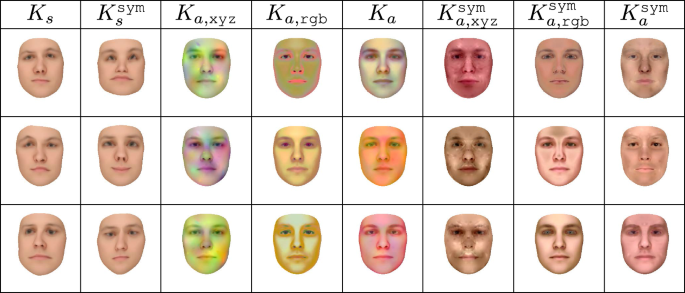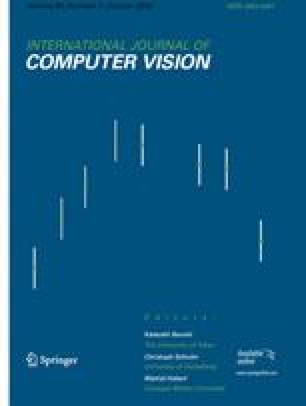从最小数据构建3D生成模型
IF 11.6
2区 计算机科学
Q1 COMPUTER SCIENCE, ARTIFICIAL INTELLIGENCE
引用次数: 0
摘要
摘要提出了一种从单个三维网格构建三维物体生成模型的方法,并通过对二维图像的无监督低镜头学习对其进行改进。我们的方法产生一个三维变形模型,表示形状和反照率的高斯过程。以前的方法通常是通过主成分分析从多个高质量的3D扫描中构建3D变形模型,而我们从单个扫描或模板中构建3D变形模型。正如我们在人脸域中演示的那样,这些模型可用于从2D数据(逆图形)或3D数据(配准)推断3D重建。具体来说,我们表明我们的方法可以只用一个3D模板(一次扫描,而不是每个人一次)来执行人脸识别。我们将我们的模型扩展到一个初步的无监督学习框架,该框架可以使用一个3D模板和少量2D图像来学习3D人脸的分布。我们的方法的动机是作为人类婴儿面部感知起源的潜在模型,婴儿似乎从先天的面部模板开始,随后发展出一个灵活的系统,通过仅使用相对少量熟悉面孔的2D图像来感知任何新面孔的3D结构。本文章由计算机程序翻译,如有差异,请以英文原文为准。

Building 3D Generative Models from Minimal Data
Abstract We propose a method for constructing generative models of 3D objects from a single 3D mesh and improving them through unsupervised low-shot learning from 2D images. Our method produces a 3D morphable model that represents shape and albedo in terms of Gaussian processes. Whereas previous approaches have typically built 3D morphable models from multiple high-quality 3D scans through principal component analysis, we build 3D morphable models from a single scan or template. As we demonstrate in the face domain, these models can be used to infer 3D reconstructions from 2D data (inverse graphics) or 3D data (registration). Specifically, we show that our approach can be used to perform face recognition using only a single 3D template (one scan total, not one per person). We extend our model to a preliminary unsupervised learning framework that enables the learning of the distribution of 3D faces using one 3D template and a small number of 2D images. Our approach is motivated as a potential model for the origins of face perception in human infants, who appear to start with an innate face template and subsequently develop a flexible system for perceiving the 3D structure of any novel face from experience with only 2D images of a relatively small number of familiar faces.
求助全文
通过发布文献求助,成功后即可免费获取论文全文。
去求助
来源期刊

International Journal of Computer Vision
工程技术-计算机:人工智能
CiteScore
29.80
自引率
2.10%
发文量
163
审稿时长
6 months
期刊介绍:
The International Journal of Computer Vision (IJCV) serves as a platform for sharing new research findings in the rapidly growing field of computer vision. It publishes 12 issues annually and presents high-quality, original contributions to the science and engineering of computer vision. The journal encompasses various types of articles to cater to different research outputs.
Regular articles, which span up to 25 journal pages, focus on significant technical advancements that are of broad interest to the field. These articles showcase substantial progress in computer vision.
Short articles, limited to 10 pages, offer a swift publication path for novel research outcomes. They provide a quicker means for sharing new findings with the computer vision community.
Survey articles, comprising up to 30 pages, offer critical evaluations of the current state of the art in computer vision or offer tutorial presentations of relevant topics. These articles provide comprehensive and insightful overviews of specific subject areas.
In addition to technical articles, the journal also includes book reviews, position papers, and editorials by prominent scientific figures. These contributions serve to complement the technical content and provide valuable perspectives.
The journal encourages authors to include supplementary material online, such as images, video sequences, data sets, and software. This additional material enhances the understanding and reproducibility of the published research.
Overall, the International Journal of Computer Vision is a comprehensive publication that caters to researchers in this rapidly growing field. It covers a range of article types, offers additional online resources, and facilitates the dissemination of impactful research.
 求助内容:
求助内容: 应助结果提醒方式:
应助结果提醒方式:


